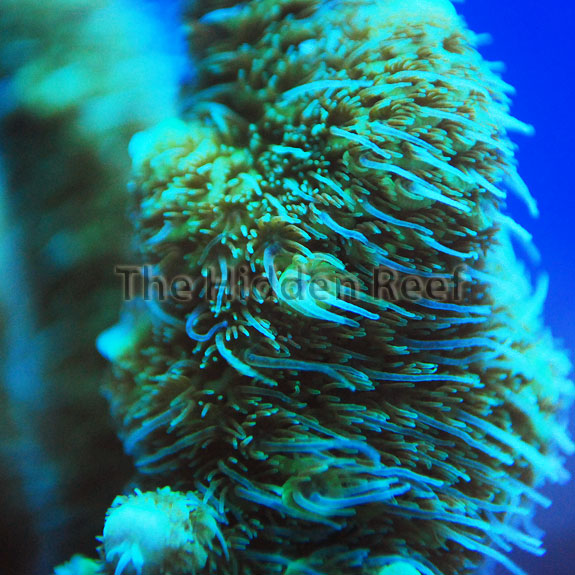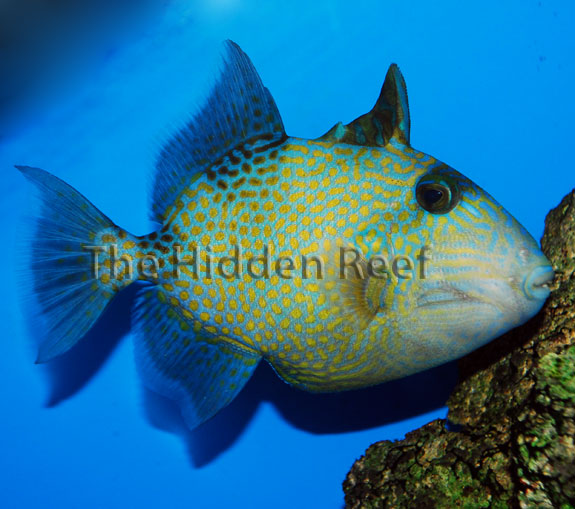One of my favorite aquariums is my 10 gallon nano reef aquarium. It contains only corals, crustaceans, and other invertebrates, so it's easier to keep clean. Some of the most interesting crustaceans in this tank are the sea star-eating shrimps: Harlequin shrimp Hymenocera elegans and Bumblebee shrimp Gnathophyllum americanum.
 Bumblebee shrimp are a perfect livestock choice for a nano reef. They don't eat corals, are safe for fish, and grow less than an inch long. When it comes to feeding, they are not as picky as Harlequin shrimp or Bongo shrimp. They are carnivores who love to eat the tube feet of echinoderms like sea stars and urchins, but will also eat some small bits of frozen mysis or Cyclop-Eeze. If you provide enough sea stars, they will easily survive the attentions of a pair of Bumblebee shrimp. It's also a good idea to stock your nano with some Stomatella snails, as the Bumblebee shrimp snip pieces from the Stomatellas to eat without killing the snail. My Bumblebee shrimp is often seen harassing one of my many quickly-reproducing Stomatella snails.
Bumblebee shrimp are a perfect livestock choice for a nano reef. They don't eat corals, are safe for fish, and grow less than an inch long. When it comes to feeding, they are not as picky as Harlequin shrimp or Bongo shrimp. They are carnivores who love to eat the tube feet of echinoderms like sea stars and urchins, but will also eat some small bits of frozen mysis or Cyclop-Eeze. If you provide enough sea stars, they will easily survive the attentions of a pair of Bumblebee shrimp. It's also a good idea to stock your nano with some Stomatella snails, as the Bumblebee shrimp snip pieces from the Stomatellas to eat without killing the snail. My Bumblebee shrimp is often seen harassing one of my many quickly-reproducing Stomatella snails.Harlequin shrimp make are a great "showy" creature for a nano reef. Their beauty is surpassed by few other crustaceans. Harlequin shrimp are large enough that they are easy to spot, but small enough (only a couple inches) that they can be kept in a nano aquarium. They can be kept singly, but it's much more interesting to keep a pair. They seem to use their giant, paddle-like chelipeds to communicate with one another, perhaps coordinating their sea star attacks.
It is very easy to sex Harlequin shrimp. Females have tiny, color-spotted swimmerettes on the underside of the tail. Males have a clear, colorless underside. Two males or two females should not be housed together, but males and females pair easily and without aggression.
Unlike the Bumblebee shrimp, Harlequin shrimp consume the whole star, not just the feet. They use their large front claws to pinch and pry the legs of sea stars from their substrate, then force the sea star onto its back where it is helpless. They can keep a sea star alive for long periods of time while feasting on them.
 Harlequin shrimp only eat sea stars. They don't eat brittle stars, however. The most readily available food sources for Harlequin shrimp are the tiny, hitchhiking Asterina stars, Chocolate Chip or African Knob, Linkia, Fromia, or Sand sifting stars. Linkia and Fromia stars are difficult to keep in captivity and more expensive. Remember, though, that the hardy, inexpensive Chocolate Chip and African Knob stars are not reef safe. It is possible to house a few Chocolate Chip stars separately from your nano aquarium and cut a leg off to feed the Harlequin shrimp, then allow the removed legs to grow back.
Harlequin shrimp only eat sea stars. They don't eat brittle stars, however. The most readily available food sources for Harlequin shrimp are the tiny, hitchhiking Asterina stars, Chocolate Chip or African Knob, Linkia, Fromia, or Sand sifting stars. Linkia and Fromia stars are difficult to keep in captivity and more expensive. Remember, though, that the hardy, inexpensive Chocolate Chip and African Knob stars are not reef safe. It is possible to house a few Chocolate Chip stars separately from your nano aquarium and cut a leg off to feed the Harlequin shrimp, then allow the removed legs to grow back.Hawaiian Harlequin shrimp are the most colorful, but they command pretty high prices and are more rare. The Indonesian variety is a little less expensive and may be purple, blue, or a combination.
Bongo shrimp are related to Harlequin shrimp, and eat both Sea Stars and Brittle stars. They are much smaller, growing to only an inch. They're also much more rare and command a price between $100 - $130 a pair. Here is a video by Liveaquaria.com of Bongo shrimp eating brittle stars.































